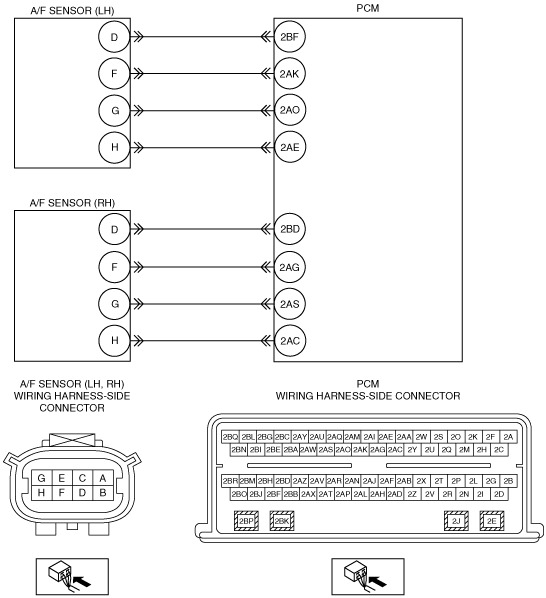DTC P0133:00
DTC P0153:00
P0133:00: A/F sensor (RH) circuit slow response
P0153:00: A/F sensor (LH) circuit slow response
DETECTION CONDITION
• P0133:00 indicates slow response of A/F sensor (RH) circuit
• P0153:00 indicates slow response of A/F sensor (LH) circuit
• The PCM monitors oxygen sensor response time by commanding a calibrated fuel control routine. This routine sets the air fuel ratio to a calibrated limit to produce a predictable oxygen sensor signal amplitude. For vehicles with universal heated oxygen sensors (HO2S), the test fails if the oxygen sensor signal does not reach the predicted amplitude within a predetermined response time. For vehicles with heated oxygen sensors (HO2S), the test fails when the oxygen sensor amplitude is less than the predicted minimum amplitude limit.
POSSIBLE CAUSE
• Contaminated A/F sensor
• Incorrect fueling
• MAF sensor malfunction
• Exhaust leaks
• Open or short circuit between PCM and A/F sensor
• Inlet air leaks
• Deteriorating A/F sensor
• A/F sensor heater malfunction
• PCM malfunction
